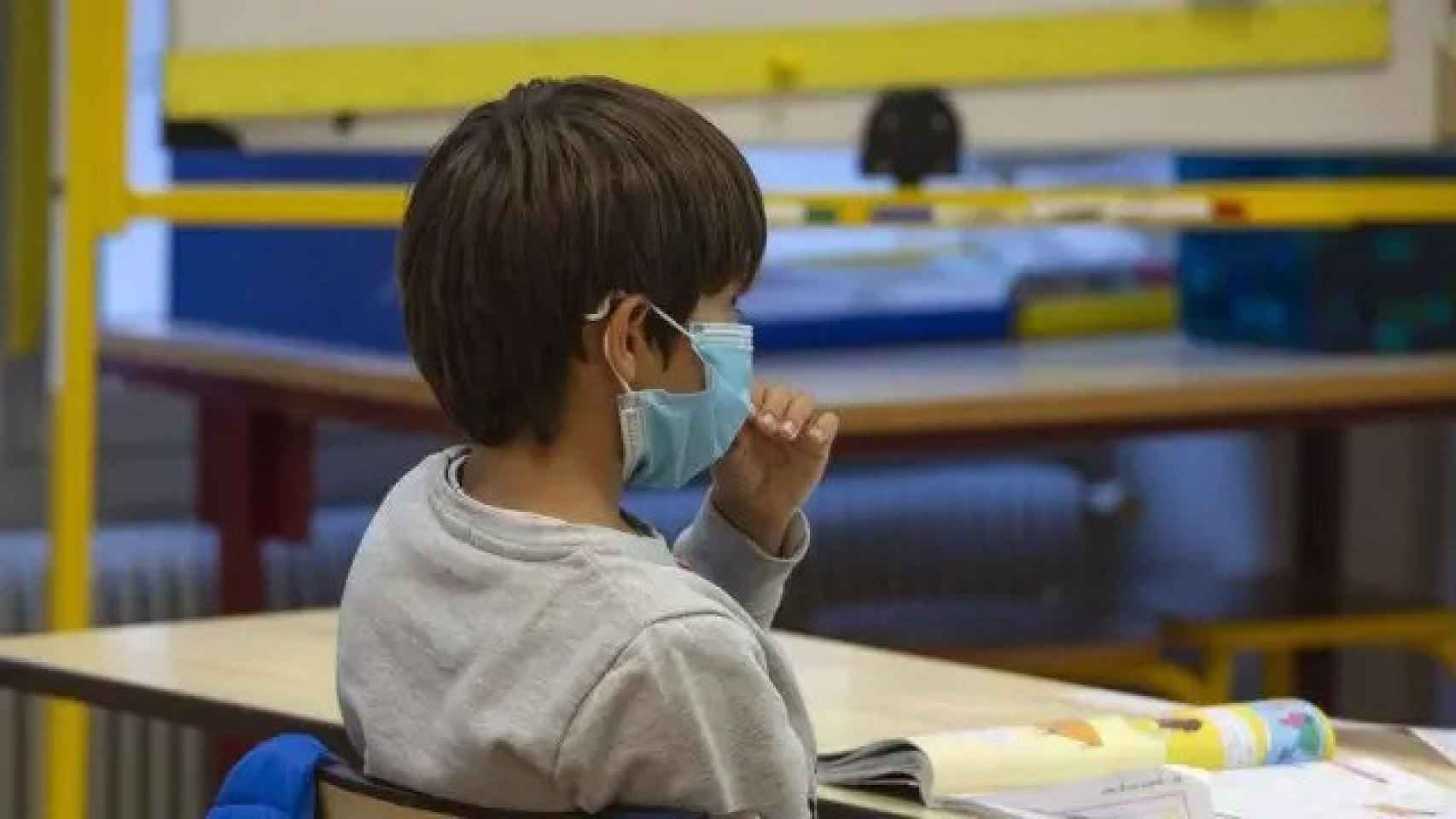Today, in the face of emergencies with large influxes of adults and seniors into health centers and hospitals, this is being ignored. In boys and girls, influenza is less severe than other infections, and most people don’t develop complications. However, these weeks have seen a high incidence of Health professionals on alert as expectations of return to classrooms growthey asked not to take the disease lightly.
In the last week of the year, primary care recorded a 75.7% increase in influenza incidence compared to the previous seven days.The most affected age group are those under one year old, who This figure has almost quadrupled: 1,661.9 cases per 100,000 inhabitants, compared with 438.3 cases in the general population. The next highest incidence is among children aged 1 to 4 years, which is twice the overall incidence, followed by children aged 5 to 14 years.
Elderly people over the age of 80 are the most common people hospitalized due to influenza. However, the next age group is children under 1, with about 20 hospitalizations per 100,000 people. Infants and young children aged 1 to 4 years old, with an income of about 10, are not far away from us.
(The strange flu that comes and goes: Why a child’s fever goes away after 48 hours)
“That is why it was decided to vaccinate children between the ages of 6 and 59 months against influenza in all autonomous communities,” explained the pediatrician in Zaragoza. Teresa SenaroVice-President of the Spanish Association of Primary Care Pediatrics.
Although the vaccination campaign for minors is not progressing as expected: “In Aragon, 41% of children have been vaccinated. It is true that the first years (of vaccines) are difficult to start, but the numbers are over.” A bit short . “
The 2023-2024 respiratory virus season is the first time influenza vaccines will become widely available in this age group. Previously, it was only available to those with medical conditions that predisposed them to serious illness, but last year three communities (Andalusia, Murcia and Galicia) have extended its coverage to healthy children.
(First flu vaccination campaign for healthy children not yet started: ‘The numbers are terrible’)
Senaro acknowledged that despite official data (collected by the Carlos III Health Institute), more adults than children in her area are infected with the flu. However, he called for the disease not to be taken lightly, warning that “influenza starts spreading when children are out of school; Once back to school for a week, case numbers increase rapidly“.
Influenza symptoms are similar at any age: Fever, malaise, muscle aches, or headache that lasts for a weekalthough children may have more difficulty expressing their feelings.
However, they differ in the types of complications they may develop. The most common is otitis media, but pneumonia can also occur. Senaro himself recently witnessed a case treated for this purpose at the Women’s and Children’s Hospital of Zaragoza.
(Why flu symptoms last so long and 7 other key questions about the virus that’s devastating Spain)
“In paediatrics, age has a strong influence on how to act: in the first two or three years of a child’s life, the pediatrician always has to assess the condition. Older children, if they are generally well, can stay at home”.
Javier Alvarez AldínDigestive complications may also occur, a member of the Vaccine Advisory Committee of the Spanish Pediatric Society explained.
“It could be intestinal flu, with diarrhea, but there are other complications as well. These kids may need supportive measures like hydration because they often stop eating; and sometimes respiratory support.”
Respiratory virus severity
Despite the high number of cases and the danger of downplaying the disease, the reality is that influenza is less serious than other common childhood respiratory infections such as respiratory syncytial virus or RSV.
The key is that RSV targets the bronchi. “The virus can cause breathing difficulties due to bronchial obstruction and is a common reason for hospitalization in the first months of life: children can suffocate.” points out Teresa Senaro. Influenza, on the other hand, is characterized by fever syndrome and general malaise, but without hindrance. “Every virus has its target. “
This is why COVID-19 is less dangerous – be careful not to generalize: children who are only a few months old, immunosuppressed or have certain medical conditions are always vulnerable – even more so than the flu , while influenza “causes higher fevers than SARS – coronavirus-2”.
However, Alvarez Aldín noted that many times it is “difficult to distinguish” which disease it may be, “so precautions must be taken against one and the other.”
(The worst flu is coming: Spain awaits peak of infections in worst pandemic since COVID-19)
However, one of the greatest dangers of respiratory infections is shared by these and many others: spread to vulnerable adults around youjust like grandparents, especially on family reunion days like the one we just had.
“Children have very strong viral loads and can infect the adults around them,” Senaro said. “Grandparents are the primary caregivers and are high-risk patients,” he warned. “That’s the benefit of the vaccine: It doesn’t prevent infection, but it eliminates discomfort and reduces the likelihood of transmission.”
Alvarez-Aldín encouraged those who haven’t been vaccinated yet to get vaccinated. “There’s still one season left. Anyone who has already been infected with influenza A can become infected with influenza B, whether it’s a child or an adult. In fact, last year there was a second wave that followed the first wave.”
He also pointed out There is a lag period of one or two weeks between the peak incidence in children and adults, so we’ll have to watch how it evolves over the next few weeks. “But it’s hard to understand that with current transmission rates being so high, there could be more cases.”
Follow topics that interest you

